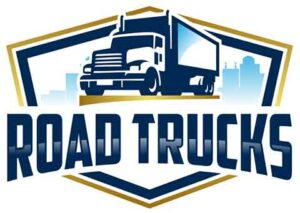You’re interested in driving a big truck, but you’re unsure how big you can go without needing a CDL. Here’s how you can tell what you can and can’t drive.
A truck can be driven without a Commercial Driver’s License (CDL) if its Gross Vehicle Weight Rating (GVWR) is 26,000 pounds or less. The GVWR is the maximum weight a fully-loaded vehicle is allowed to have, and it’s found on the vehicle’s Safety Compliance Certification Label.
The list of non-CDL trucks is without end, but I’ll give you a few great examples. Then, we’ll look at some groups of trucks where you can find non-CDL ones, and I’ll include examples in each of those categories. With all that, you’re going to want to know how to make sure your truck’s GVWR is under 26,000, which we’ll go over at the end.
Contents
Ford F650
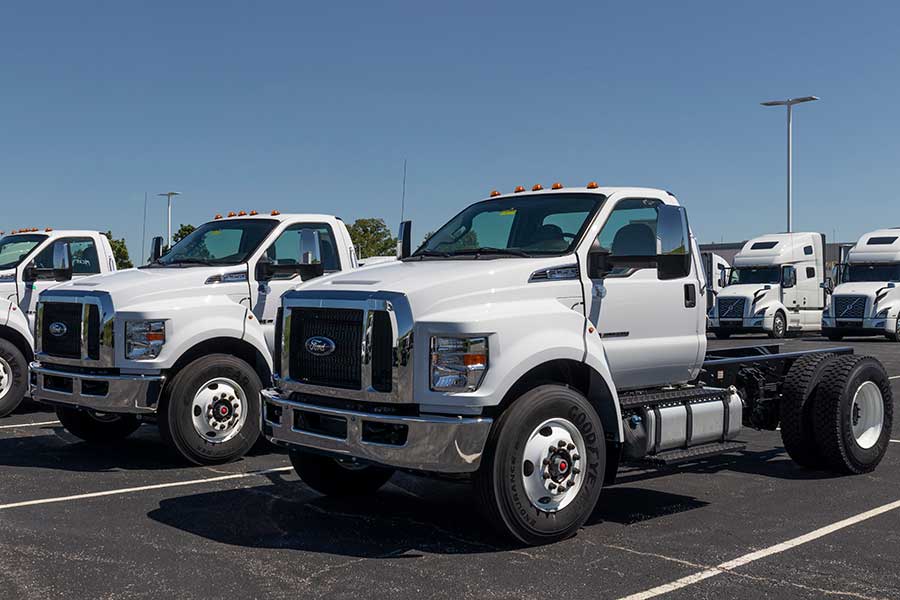
A popular choice for big jobs is the Ford F650. This truck just brushes the limit for how heavy a truck can be before you need a CDL. This truck can have a dump bed or a square box for its body, so whether you need to move a lot of boxes or a few tons of dirt, this truck can get the job done.
GMC Topkick
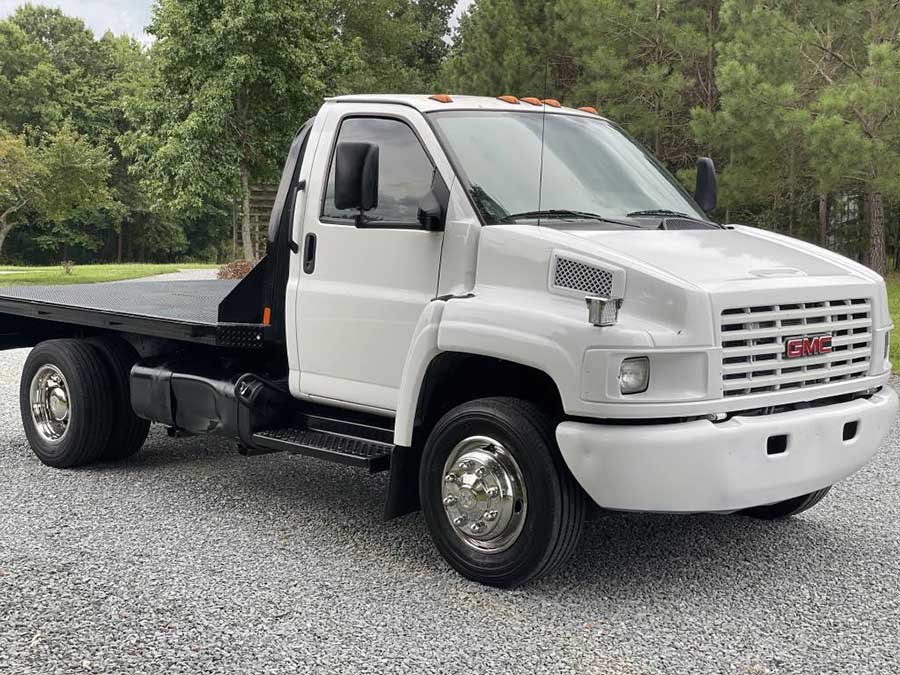
This truck isn’t quite as heavy-duty as the Ford, but it gets pretty close. In the 2009 model year, the GMC TopKick 5500 4×4 got quite a few upgrades from its previous models, including a 2,000-pound capacity increase that brought its GVWR up to 21,500 pounds.
Chevrolet Kodiak
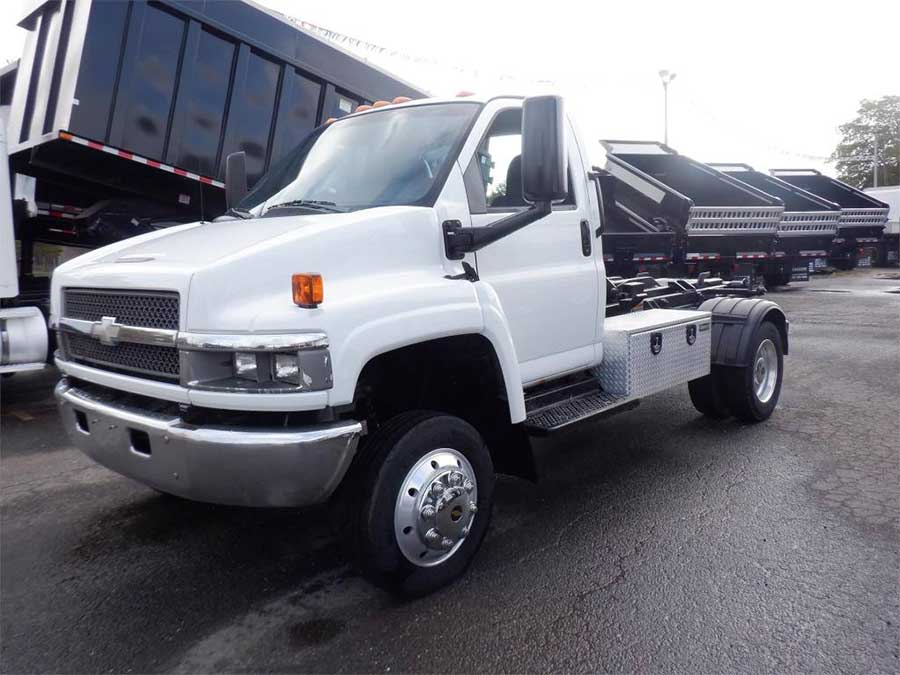
This Chevy truck is 8 feet tall, 8 feet wide, and 20 feet long, and it can easily tow about 5 tons and more. The real towing capacity is 16,000 pounds, but we’ll get into why you shouldn’t haul that much without a CDL later (you could probably tow someone out of the mud with that, though).
It comes in 4×2 and 4×4. The natural visibility isn’t great, but it comes with cameras that will show you your blind spots whenever you turn on your blinker. The transmission is also really smooth compared to other heavy-duty trucks.
Class 5 and Class 6 Trucks
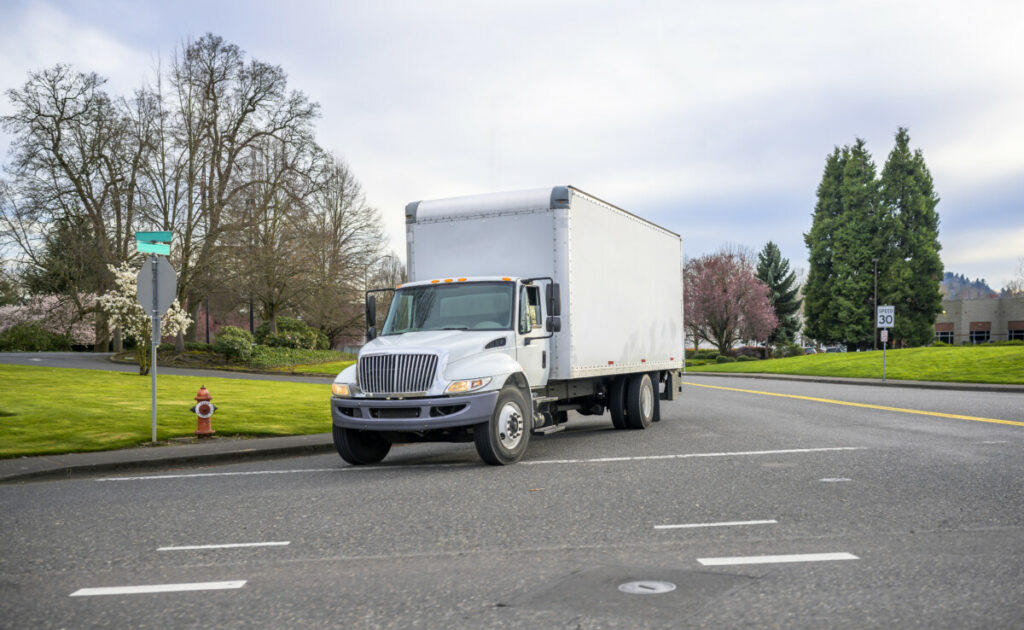
As you’re looking for non-CDL trucks, you may come across the labels “class 5” and “class 6” for trucks. These classes can help you figure out what type of truck you’re dealing with, and they might help you determine pretty quickly whether you can legally drive it without a CDL.
A class 5 truck is any truck with a GVWR of 16,001 pounds to 19,500 pounds. As you can tell from the numbers, all of these trucks are easily within the range for you to drive without a problem, but these aren’t the sort of thing you’re looking for when you want to know just how big of a truck you can drive without a CDL.
A class 6 truck is the next weight tier up: these trucks have a GVWR of anywhere between 19,501 and 26,000, making these trucks the biggest ones you can drive without a CDL. The GMC Topkick, as well as the Ford F650 and other F-series Fords, are examples of class 6 trucks. This category encompasses medium-duty trucks.
These labels can be used to quickly and easily tell whether you can legally drive a truck, but before you get in the driver’s seat, you will want to check the door jamb for the specific GVWR: sometimes, the GVWR varies between trucks of the same model, even if they’re the same year, so it’s best to just take a second to check and make sure before starting it up.
Box Trucks
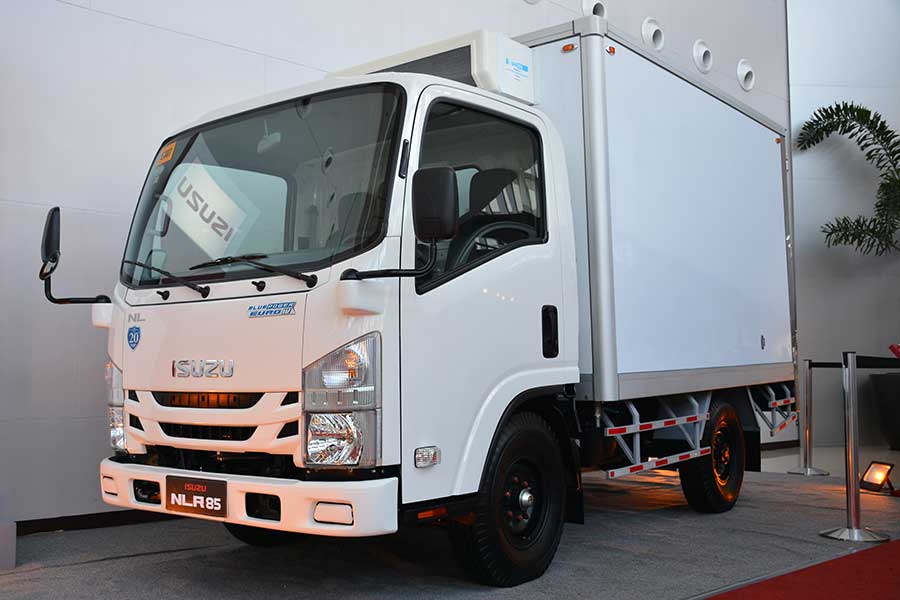
Box trucks have a cargo area shaped like a cuboid (or box), and they’re used for transporting lots of stuff at once. Unlike the big 18-wheelers, though, the cargo area is attached to the truck’s chassis instead of following it on a trailer. That’s why they’re also called “straight box trucks.”
For a box truck to be a non-CDL truck, it has to have a GVWR of 26,000 pounds or less. This means that it can be 26 feet long at most.
I say that like it’s not a lot, but don’t get me wrong: that’s a lot of lengths to be dealing with, especially considering you won’t get to see out the back! Even as someone who spent teenage years learning to drive in an 18-foot suburban, I’m impressed with anyone who can successfully maneuver these trucks.
Non-CDL box trucks include U-Haul trucks 26 feet and under. The maximum load on that 26-foot truck is 12,859 pounds.
Another example is Penske’s 26-foot moving truck. This truck’s GVWR is 26,000 as well, but the dimensions are a little different. These trucks have 1,400 cubic feet of cargo space, and the maximum payload they can handle is 8,000 pounds.
Related Article: Box Trucks That Require a CDL Vs. Non-CDL
Refrigerated Trucks
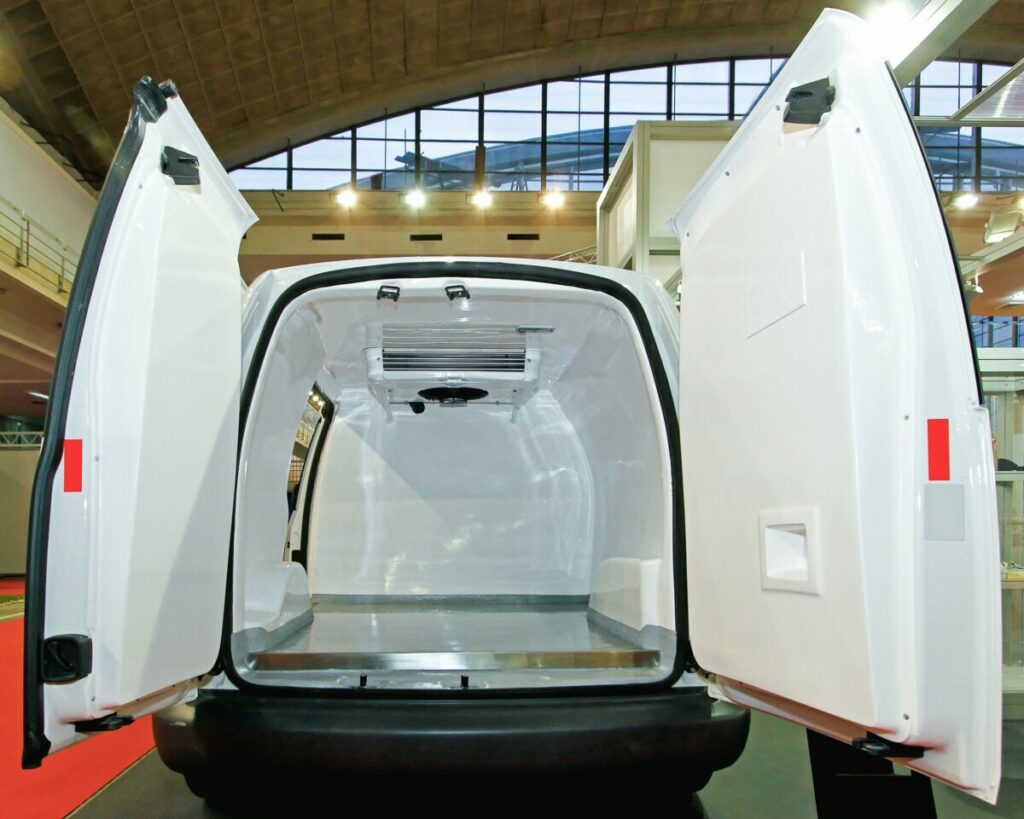
When you have a lot of cargo that you need to keep cool, a refrigerated truck might be the thing for the job. This type of truck has an insulated cargo area with a refrigerating unit to keep perishable and temperature-sensitive cargo at the right temperature for extended lengths of time.
Naturally, the heavier walls and the refrigeration unit will add to the truck’s weight, reducing the amount of space and weight capacity you have for the payload.
A 22-foot Ryder refrigerated truck has a 26,000 GVWR. One of these trucks has 7,000 pounds of load capacity. That’s 4 fewer feet than a box truck of the same GVWR and a lot less weight capacity.
If you rent a refrigerated truck from Ryder or another truck rental company, be sure to double-check the truck’s GVWR before confirming the transaction. That 22-foot truck is on the bottom end of Ryder’s scale, and you don’t want to accidentally get one that’s even slightly bigger than that.
Penske also rents out Refrigerated trucks, and they’re a little more efficient with the weight. Just like their other box trucks, the biggest non-CDL refrigerated truck you can rent from them is 26 feet long and can carry up to 8,000 pounds of payload.
Related Article: How Much Does Refrigerated Truck Rental Cost?
Flatbed Trucks
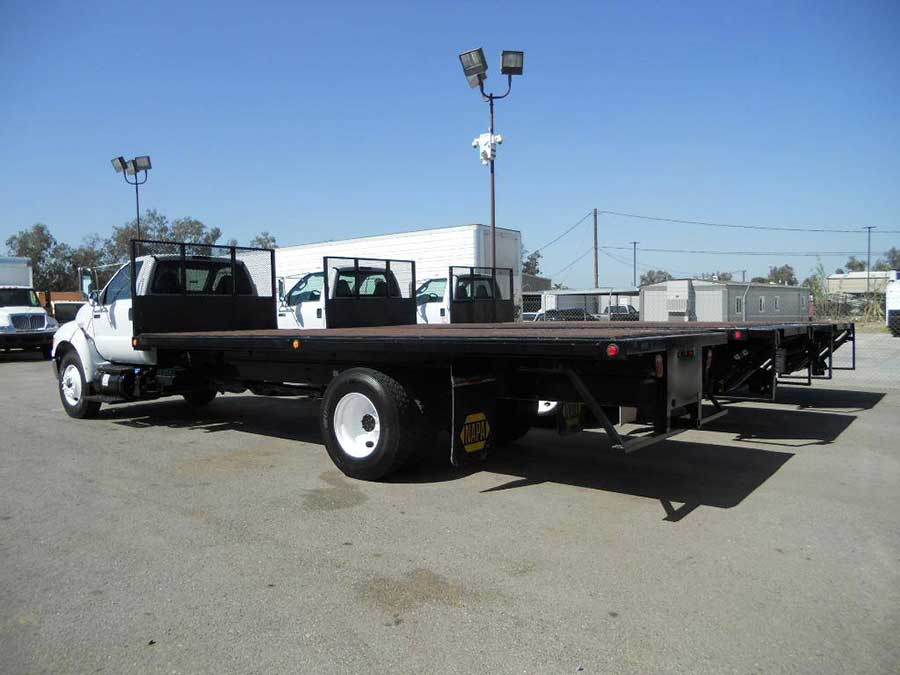
A flatbed truck has no roof or sides on the body. Instead, it has a long bed attached to the chassis behind the cab. Flatbed trucks are used for hauling building materials, hay bales, heavy machinery, scrap metal, and other large cargo that doesn’t need a roof or walls to contain or protect it.
Like the box trucks, non-CDL flatbeds usually max out around 26 feet, at which point its GVWR approaches 26,000 pounds. The nice thing about flatbeds versus box trucks is that you might be able to see through the rear-view mirror, though that will depend on your load, of course.
An example of a non-CDL flatbed is the 2018 Freightliner M2-106. This truck has a GVWR of 26,000, and the body is 17.5 feet long. That’s not including the cab, which adds about 9 more feet to make the whole thing 26.5 feet long.
Related Article: How Much Does Flatbed Rental Truck Cost?
Stake Trucks
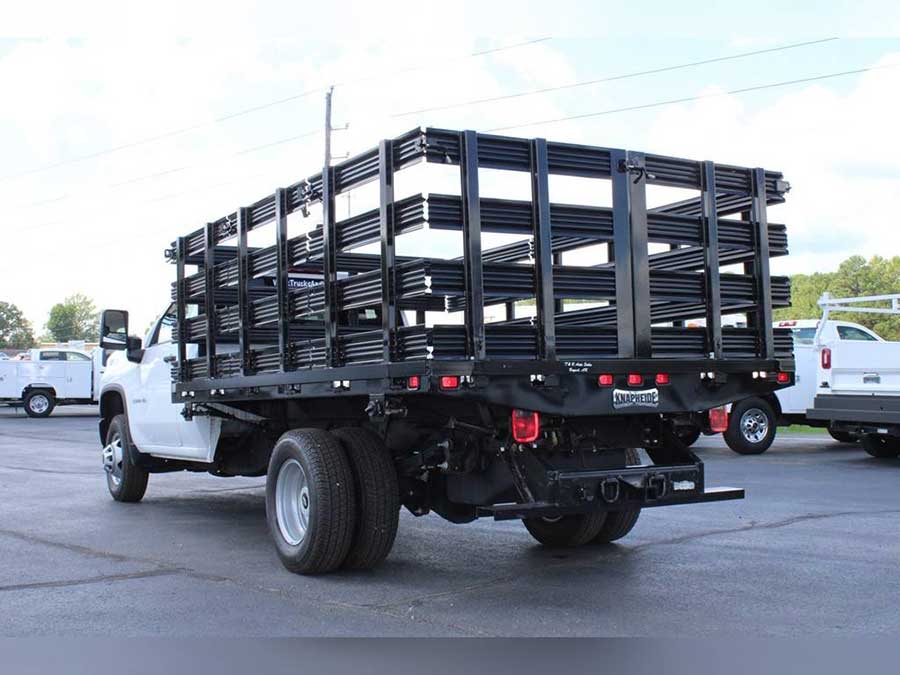
If you’re not thrilled with the idea of a bed without any walls to keep all the payload on the truck, you might want to look for a stake truck. A stake truck is just like a flatbed truck except that the bed has sockets around the edge where you can install a sort of fence to go around the payload.
The fence is made from upright stakes that go into the sockets around the edge of the bed. The stakes are connected with boards or long slats of metal, giving it that fence-like look.
You can likely find stake trucks in the same model as any flatbed you find. All you have to do is make sure the flatbed has sockets for the fence, and maybe shop around for the fence as well.
Dump Trucks
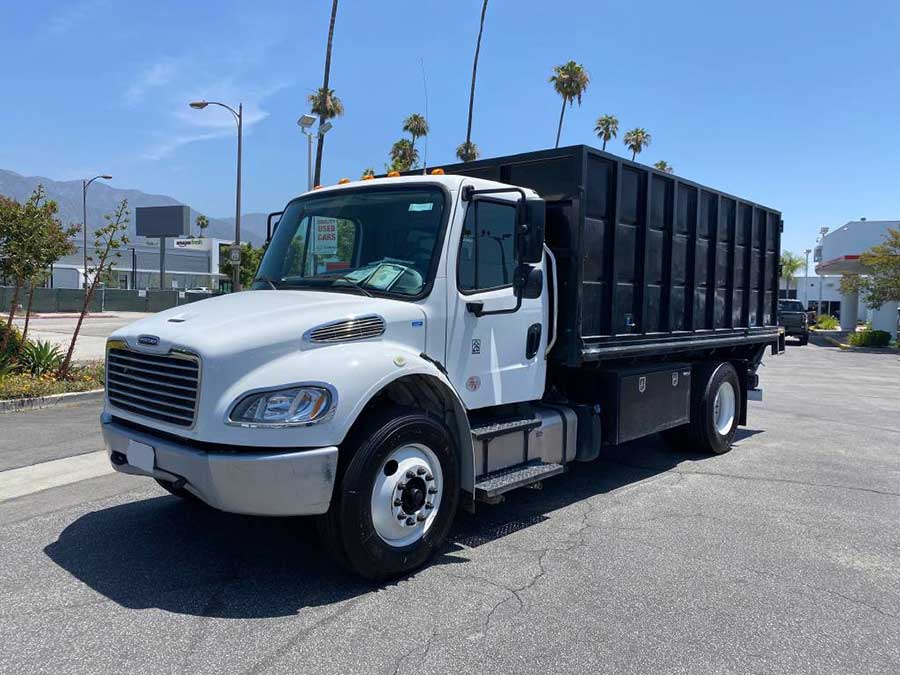
A dump truck is any truck with a dump bed. It’s not necessarily a big yellow tractor or a garbage truck. Those two are probably too heavy-duty to make this list anyway. No, for our purposes, dump trucks are similar to flatbed trucks. The thing that sets them apart is the dump bed, which allows you to fill up the bed, drive it somewhere else, and dump it out.
One truck that can have a dump bed is this 2006 INTERNATIONAL 4300. With a GVWR of 25,999, this has a 16-foot bed that’s a 42-inch deep dump bed with mesh attached on the sides to give it another foot of vertical space. The cab adds about 8 feet, making the truck 24 feet long.
Another dump truck example is a 2011 Isuzu NPR. This one is another 16-footer with a 25,999 GVWR. As you can see, a 16-foot bed is about the biggest size you can get without a CDL.
Related Article: How Much Does it Cost to Rent or Lease a Dump Truck?
Towing Trailers
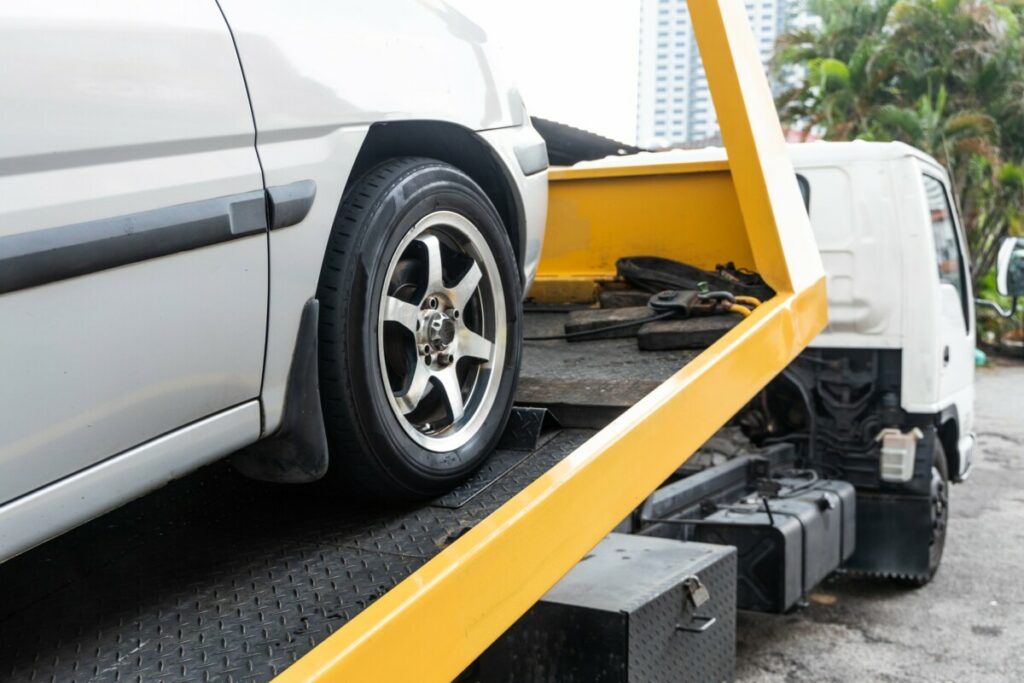
Up to this point, we’ve used the vehicle’s GVWR to determine whether you can drive it. With the GVWR alone, you can fill the vehicle to the maximum recommended capacity and still stay under the weight rating, thus making sure you’re staying in the non-CDL range.
But that’s not all you can do with a truck, is it? Especially with these powerhouses of vehicles we’ve been talking about.
Let’s talk about trailers because the amount of weight you tow can affect whether you need to have a CDL or not. After all, you don’t want to go through all the effort of finding a non-CDL truck just to have that all negated when you find out you’re hauling too much weight, right?
With that said, the maximum amount of weight a non-CDL vehicle is allowed to haul is 10,000 pounds. That’s why you shouldn’t try to tow more than that without a CDL: any more than 10,000 pounds will turn your non-CDL truck into a CDL truck.
So, when you’re looking to pair your non-CDL truck with a trailer that will keep it non-CDL, try to find one that will make it easy to stay under the 10,000-pound limit. Just like vehicles, trailers have a GVWR that can help you with that.
To find the trailer’s GVWR, go to the left side of the trailer. You should find the Federal Certification or VIN label on the front half of the trailer. That label will tell you the trailer’s GVWR. If it’s less than 10,000 pounds, it will have a vehicle placard right next to it. With that, you’ll know that you can fill the trailer to capacity without needing a CDL.
Related Article: How To Rent A Tow Truck?
How to Find Your Truck’s GVWR
If you already have a big truck lined up and you want to know whether you’re allowed to drive it without a CDL, there are three easy ways to find its GVWR: look in the door jamb, call the manufacturer, or Google it.
The truck’s Safety Compliance Certification Label is inside the door jamb. Both doors should have a sticker detailing the manufacturer’s information. The GVWR value will usually appear near the top of the sticker. Start by looking directly beneath the title of the sticker for the acronym GVWR, or GNVR (Gross Net Vehicle Rating).
If the door jamb sticker doesn’t tell you the GVWR right off, try to find the GAWR (Gross Axle Weight Rating) of both axles. Then, just add those two numbers together to get the GVWR.
If you call the manufacturer, you will want to have the model of the vehicle ready to tell them. They should be able to give you the GVWR within a minute or two.
Or, you could simply do a Google search by searching “GVWR” and the truck’s make, model, and year. The search will most likely lead you to a vehicle specifications page from the manufacturer, which will be able to give you reliable information about the truck, and the search engine should give you the answer in the snippet before you even click on it.
Keep in mind that some vehicles come with multiple GVWR options, even when they have the same model and year. If your vehicle of choice has a GVWR option above 26,000 pounds, you’re going to want to double-check the one you’re going to drive to make sure it’s less than that so that you can legally drive it without a CDL.
